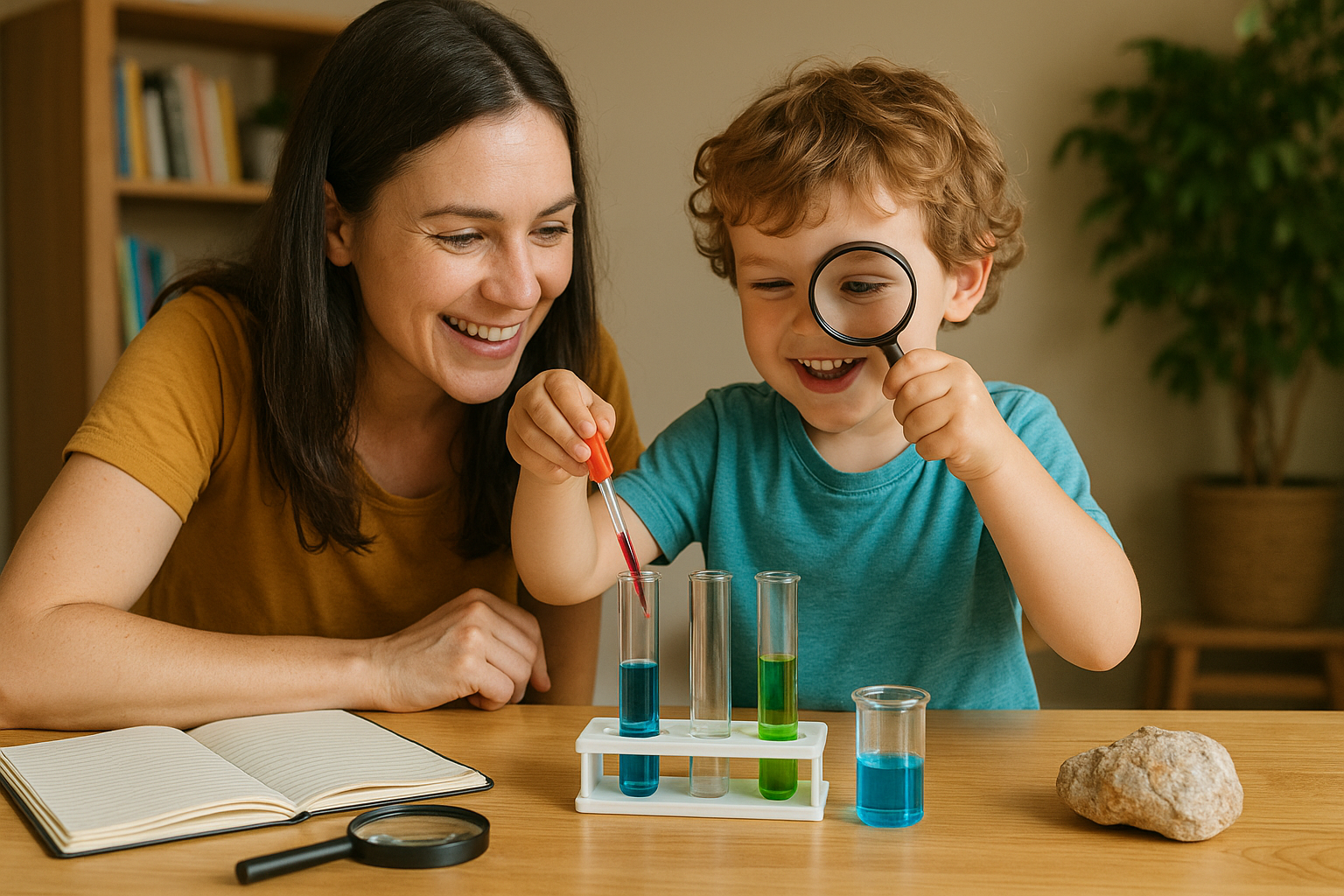Children are natural scientists. They explore the world around them with wide-eyed wonder, asking questions, testing ideas, and experimenting constantly. Encouraging this scientific curiosity at home, especially during early childhood, sets a powerful foundation for critical thinking, problem-solving, and a lifelong love of learning. In this article, you’ll discover practical ways to foster scientific thinking in a playful, age-appropriate way.
Why Science at Home Matters
Science is not just about laboratories and white coats. For young children, science is everywhere:
- The water in the bathtub
- The plants in the garden
- The bugs on the sidewalk
- The bubbles in a glass of soda
Children observe, hypothesize, test, and revise—without even knowing they’re doing it. Our job is to nurture that instinct.
The Foundations of Scientific Thinking
Before diving into activities, let’s understand what scientific thinking means for young kids:
- Asking questions: Why is the sky blue? What makes things float?
- Making predictions: If I drop this, what will happen?
- Observing: Looking, listening, touching, smelling.
- Experimenting: Trying something out and seeing what happens.
- Drawing conclusions: This happened because…
Even toddlers can participate in these steps with the right support.
Encourage Open-Ended Questions
Shift from giving all the answers to asking more questions. This sparks curiosity:
- “What do you think will happen?”
- “Why do you think it moves like that?”
- “How can we figure this out?”
Don’t rush to correct them—let them explore ideas, even if they’re off track. This is how thinking develops.
Turn Daily Life into Science Opportunities
Cooking Experiments
Let kids mix ingredients, observe changes, and guess outcomes:
- What happens when you stir flour and water?
- What does heat do to an egg?
- Why does baking soda bubble with vinegar?
Bath Time Science
Try floating and sinking toys. Ask:
- “Why does the sponge float?”
- “How can we make this sink?”
You can even experiment with temperature or soap bubbles.
Gardening and Nature
Let kids plant seeds, observe bugs, and water flowers. Explore:
- Growth over time
- Plant parts and functions
- Seasons and weather effects
Even a small balcony garden or potted plant can become a science lab.
Create a Science Table at Home
Designate a corner or table with:
- Magnifying glass
- Feathers, rocks, leaves, shells
- Simple measuring tools
- Journals or paper for drawing observations
Rotate materials weekly and let your child lead exploration.
Encourage Observation and Recording
Even if they can’t write, kids can:
- Draw what they see
- Use stickers or stamps to record what they did
- Take photos with your phone
- Make audio recordings describing what they observed
This builds scientific communication skills.
Science Through Stories and Books
Look for storybooks that encourage science thinking. Some great themes include:
- Seasons and weather
- Animal behaviors
- Space and planets
- Habitats and ecosystems
- Magnets and machines
After reading, ask: “What surprised you?” or “What would you like to try from the story?”
Simple Experiments to Try at Home
1. Volcano Eruption
Materials: Baking soda, vinegar, food coloring.
What to do: Put baking soda in a cup, add coloring, pour vinegar. Watch the eruption!
Concepts: Chemical reactions, gases.
2. Ice Melting Race
Materials: Ice cubes, salt, warm water, room temp water.
What to do: Test how fast ice melts under different conditions.
Concepts: States of matter, temperature.
3. Sink or Float
Materials: Bowl of water, toys or household items.
What to do: Predict and test which items float or sink.
Concepts: Density, buoyancy.
4. Shadow Play
Materials: Flashlight, toys.
What to do: Create shadows and try changing their size or shape.
Concepts: Light, angles, opacity.
Encourage “Failed” Experiments
Let your child know that not all experiments go as planned—and that’s okay! Use phrases like:
- “What can we learn from that?”
- “Let’s try a different way.”
- “That was interesting—why do you think it happened?”
This builds resilience and a real scientific mindset.
Display Their Discoveries
Celebrate their work by:
- Hanging up drawings or science journals
- Recording short videos of them explaining something
- Creating a “museum” shelf of cool findings
This validates their curiosity and effort.
Keep a Wonder Journal
Help your child create a “Wonder Journal” with:
- Questions they’ve asked
- Things they want to explore
- Drawings of observations
- Fun facts they’ve learned
This becomes a treasured keepsake and a record of growth.
Involve the Whole Family
Science doesn’t have to be solitary. Involve siblings or parents:
- Do a family science night once a week.
- Go on nature walks together.
- Take turns leading a simple experiment.
Curiosity is contagious!
Conclusion: Raising a Little Scientist
Science is not a subject to be introduced later in school—it starts at home, in the bathtub, kitchen, and backyard. Encouraging your child’s scientific thinking means helping them wonder, observe, and question every day. With just a little guidance, you can nurture a mindset that will help them navigate the world with confidence and curiosity.
